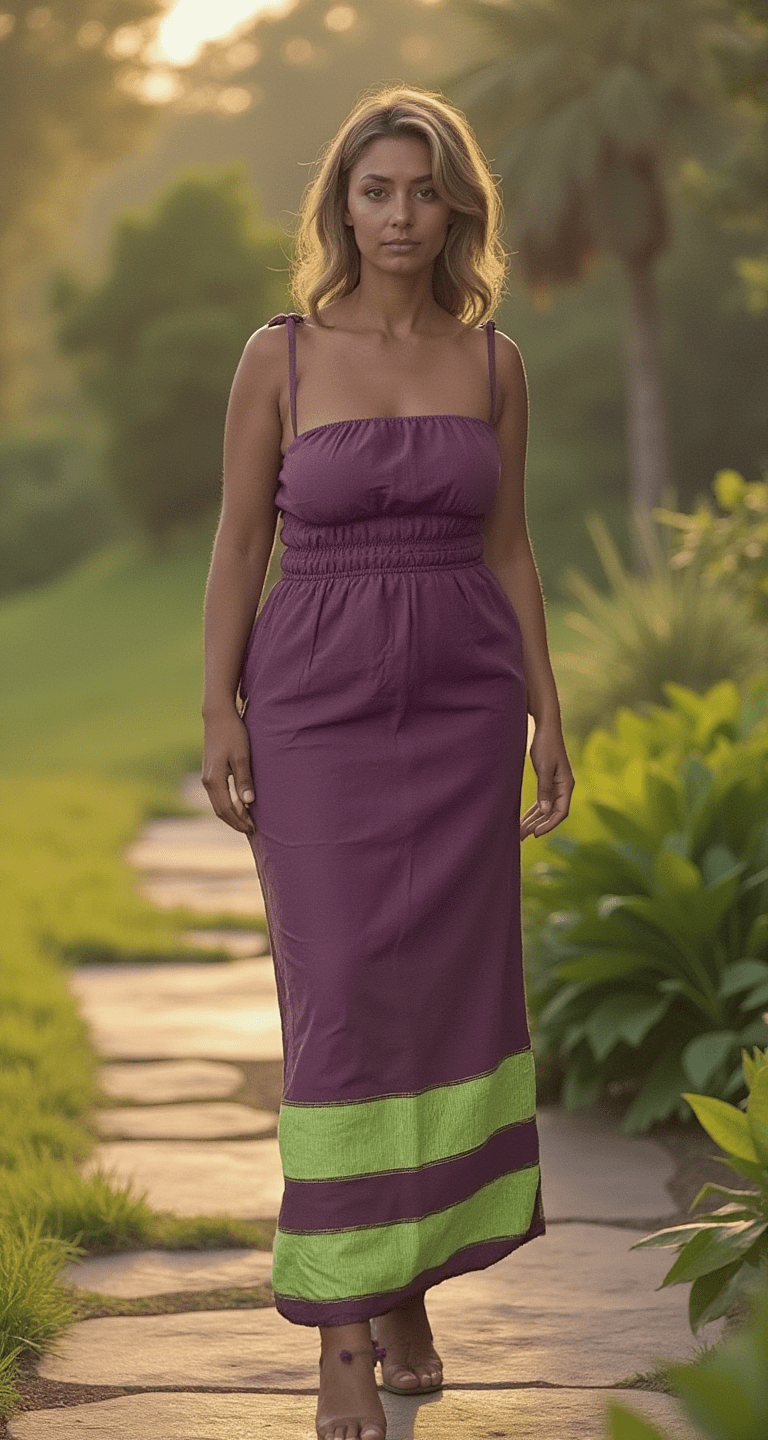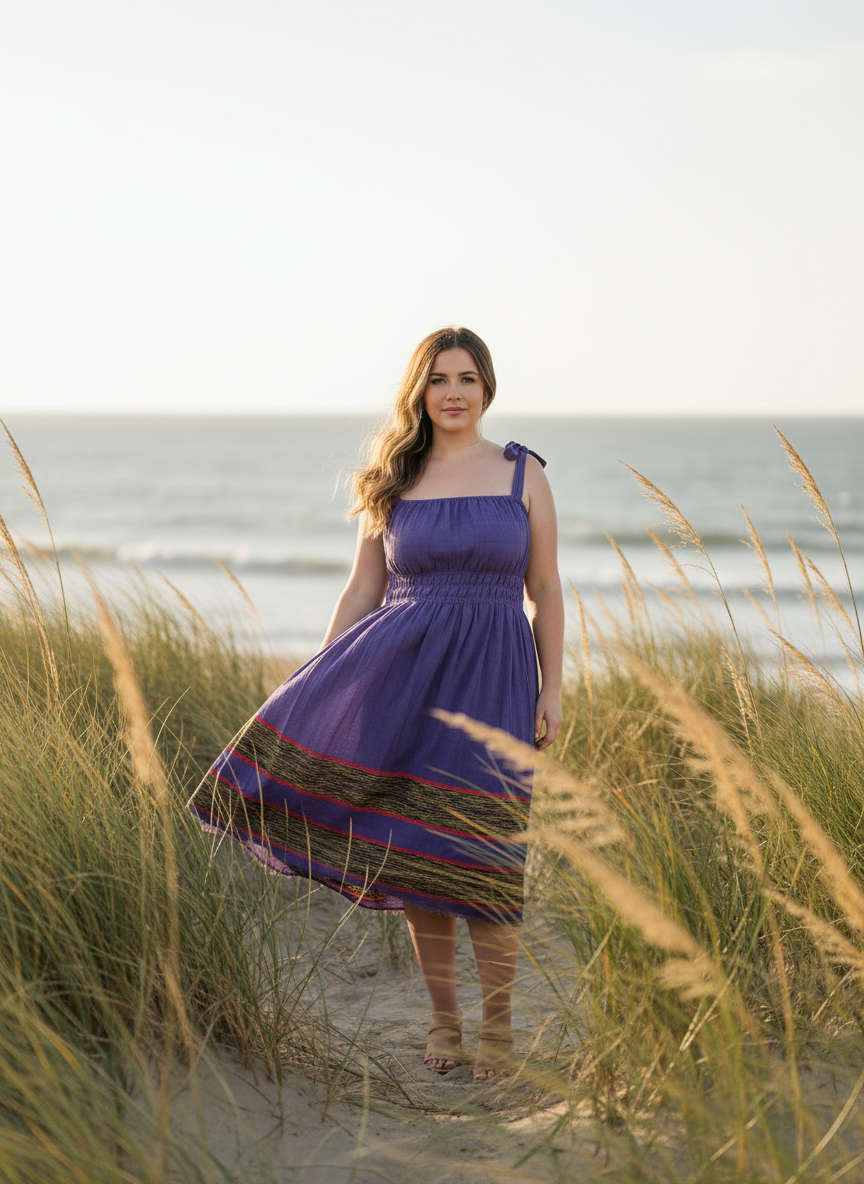Handwoven clothing is more than something we wear. It is the story of people, places, and traditions that have been passed down for generations. Every thread tells of patience, skill, and creativity. At a time when most fashion is produced quickly in factories, handwoven garments remind us of the value of slowing down and paying attention to detail.

A Craft with Deep Roots
Across many cultures, weaving has always been a way of life. In Ethiopia, weaving is part of daily tradition. Families keep wooden looms in their homes, and the knowledge of weaving is shared from one generation to the next.
Cotton grown in Ethiopian fields is spun into yarn and then woven into cloth using simple, traditional tools. What might look like a plain fabric at first carries the fingerprint of its maker. The process requires focus and rhythm, the steady movement of the shuttle, the careful alignment of threads, until a textile full of life emerges.
Why Handwoven Clothing Matters
Choosing handwoven clothing today means choosing something very different from fast fashion.
-
Connection to people: A handwoven dress is not just fabric, it represents the work of skilled artisans whose craft supports families and communities.
-
Sustainability: Handmade cotton dresses, created with natural fibers, are gentle on the planet. Cotton production in Ethiopia, when done responsibly, uses fewer chemicals and works in harmony with the environment.
-
Durability: Handwoven textiles are strong and age beautifully. With proper care, they can last for many years.
In a world where clothing is often seen as disposable, handwoven garments encourage us to value what we own and to care for it.
From Cotton to Cloth: The Journey
The creation of a handwoven garment begins long before the fabric is cut and sewn.
Cotton Production in Ethiopia
Ethiopia is known for its cotton. Farmers grow it in fertile soil, harvesting by hand in small-scale settings. This slower, more mindful approach produces cotton of high quality while also supporting local agriculture.
Spinning and Dyeing
The cotton is spun into yarn, sometimes by hand, creating threads strong enough for weaving. In many cases, natural dyes are used. These dyes, made from plants and minerals, bring soft colors that reflect the Ethiopian landscape, earthy browns, deep blues, and warm yellows.
Weaving on the Loom
The loom is where the magic happens. Each movement of the shuttle adds a line to the cloth. Patterns form slowly, requiring both concentration and creativity. Unlike machine-made fabrics, handwoven textiles are never identical. Each carries its own small variations that make it unique.
Shaping the Garment
Once the cloth is ready, it is cut and sewn into garments. Whether it becomes a flowing handmade cotton dress or a tailored jacket, the final piece respects the nature of the fabric, breathable, textured, and alive with character.
If you’d like to explore this tradition more deeply, you can read our journal feature on Handspun: The Culture of Ethiopian Cotton
The Beauty of Handwoven Dresses
Dresses made from handwoven cotton are special because they combine elegance with comfort. The fabric is breathable, making it perfect for warm climates, while the weave gives it a natural structure.
Each handwoven dress feels personal. It is not just a piece of clothing but a reflection of the artisan’s time and skill. Wearing one connects you to that story. It is fashion with meaning, clothing that feels grounded and real.

Handmade Cotton Dresses and Everyday Life
Handmade cotton dresses are not only beautiful; they are also practical. Their natural fibers make them light and comfortable. They can be worn casually during the day or styled for more formal occasions.
Because no two handwoven fabrics are exactly the same, each dress has its own personality. Small differences in color, weave, or texture mean that what you wear is truly one of a kind.
In a world of mass-produced garments, this uniqueness stands out. It reminds us that clothing can be personal, not just functional.
How to Style Handwoven Clothing
One of the misconceptions about handwoven clothing is that it belongs only to traditional settings. In reality, these garments can be styled in countless modern ways.
-
Pair a handwoven jacket with denim for a casual yet chic look.
-
Layer a cotton handwoven dress with minimal jewelry for a natural, refined look.
-
Accessorize with belts or scarves to highlight the fabric’s natural drape and flow.
Handwoven clothing adapts beautifully to contemporary wardrobes, proving that heritage and modernity can coexist seamlessly.
Caring for Handwoven Clothing
Handwoven garments deserve gentle care so they can last for many years. A few simple steps help preserve their quality:
-
Wash in cold water with mild soap.
-
Avoid twisting or wringing the fabric.
-
Dry in the shade to protect natural colors.
-
Store in a cool, dry place.
These steps keep the fabric strong and the colors bright, honoring the effort that went into making it.
Explore our cotton jumpsuit collection, available in a range of beautiful colors, or choose a natural fiber dress designed to keep you comfortable and stylish.
More Than Clothing
Handwoven clothing is never just about what we see in the mirror. It represents a network of farmers, spinners, dyers, and weavers whose knowledge and creativity shape every garment. It is about respecting natural resources and remembering that fashion can be meaningful.
When you choose a handmade cotton piece, you carry with you the story of the land it came from and the people who created it. That story gives the garment depth and purpose beyond its appearance.
Final Thoughts: Clothing with Meaning
The art of creating handwoven clothing is about more than fabric and fashion, it is about honoring tradition, supporting artisans, and embracing a sustainable future.
When you choose handwoven clothing, you choose authenticity. You choose a garment that celebrates culture and craftsmanship. And most importantly, you choose to wear clothing with meaning.
At ShopYego, we invite you to experience the beauty of handwoven garments and carry their stories with pride.




